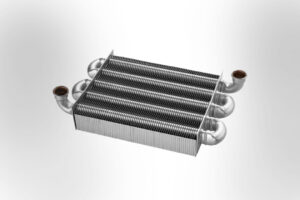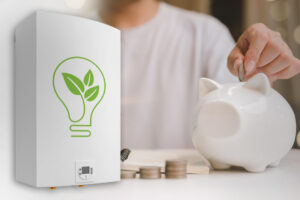Table of Contents
Around half of all the energy used in the world goes to heating and cooling, which also releases more than 40% of all the carbon dioxide produced by energy use.
Heating and cooling use a lot of energy, especially since world temperatures are rising. Only a third of people who live in hot places have cooling appliances. This shows how important it is to change the sector and lower its carbon footprint right away.
Efficient electric heat pumps will be very important in this effort, especially for heating water and space in buildings where cooling is mainly electrified.
Heat pump devices use electricity to move heat from one place to another. “Reversible air conditioners” is one way to describe them. Heat pumps can either pull heat from the outside to warm a building or push it out to cool it.
This is similar to how a fridge keeps food cold by removing its heat. They can get this heat from the ground, the air outside, water from rivers or lakes, or even heat that was left over from industrial processes. These sources can also be used to remove heat when the mode is set to cool.
Heat pumps are tools that don’t need a lot of power. They can give off three to six units of useful heat energy for every unit of power they use. But regular heating systems that use burning only give off a little over one unit of heat for every unit of energy they use.
| According to IRENA’s roadmap to net zero, Around 800 million more heat pump units need to be built by 2050 in order to keep global warming to 1.5°C. This is a 14-fold increase over the approximately 60 million units that are now in place, opening the door for a large expansion of the grid services that this incredibly efficient heating technology offers. |
They can also do many things. If a building already has gas infrastructure, heat pumps can be combined with existing gas-fired boilers to keep the heat pumps’ efficiency as high as possible in cold weather. This gives users more confidence in switching to an electric heating source.
This hybrid heat pump option will provide most of the heat, which will save money on energy costs right away. It will also keep the grid from having to handle more peak electricity loads, which could be needed to run heat pumps during very cold weather when they don’t work as well.
Switching between two types of energy, like gas and electricity, makes the energy system more reliable and can save money if smart controls are used that take energy prices into account. Over time, fuels with less carbon, like sustainable biogas, could be used instead of petrol.
The benefits of heat pumps surpass their high efficiency and ability to be hybridised with conventional heating systems. They can be combined to offer the grid services in exchange for income for the owners of the heat pumps.
One example given in the (International Renewable Energy Agency) IRENA’s Innovation Landscape Report is the Swiss company Tiko, which combines heat pumps, refrigerators, and other electrical appliances owned by numerous consumers to create what is currently the largest virtual power plant in Europe. Tiko is one of the biggest virtual power plants in Europe, combining over 7,000 households into virtual power plants with a combined capacity of 100 MW.
This virtual power plant company lowers user costs while giving the grid much-needed flexibility by using digital platforms to operate these appliances to shift or minimise peak demand. To further cut costs, the network also links private electricity generation—like rooftop photovoltaic systems—with appliance power use.
IRENA’s Innovation Week, which takes place in Bonn from September 25 to 28, 2023, will feature a session on the electrification of heating and cooling in buildings. The session will cover topics such as creative uses of heat pumps, their positive impact on consumers, and ways to increase adoption.
As part of IRENA’s road to COP28, Innovation Week sets the agenda by showcasing our position as a worldwide convener of cutting-edge sustainable solutions to hasten the global energy transformation.
Leaders, professionals, business representatives, scholars, and legislators will discuss cutting-edge technologies that can help hasten and facilitate the world’s energy transition.







